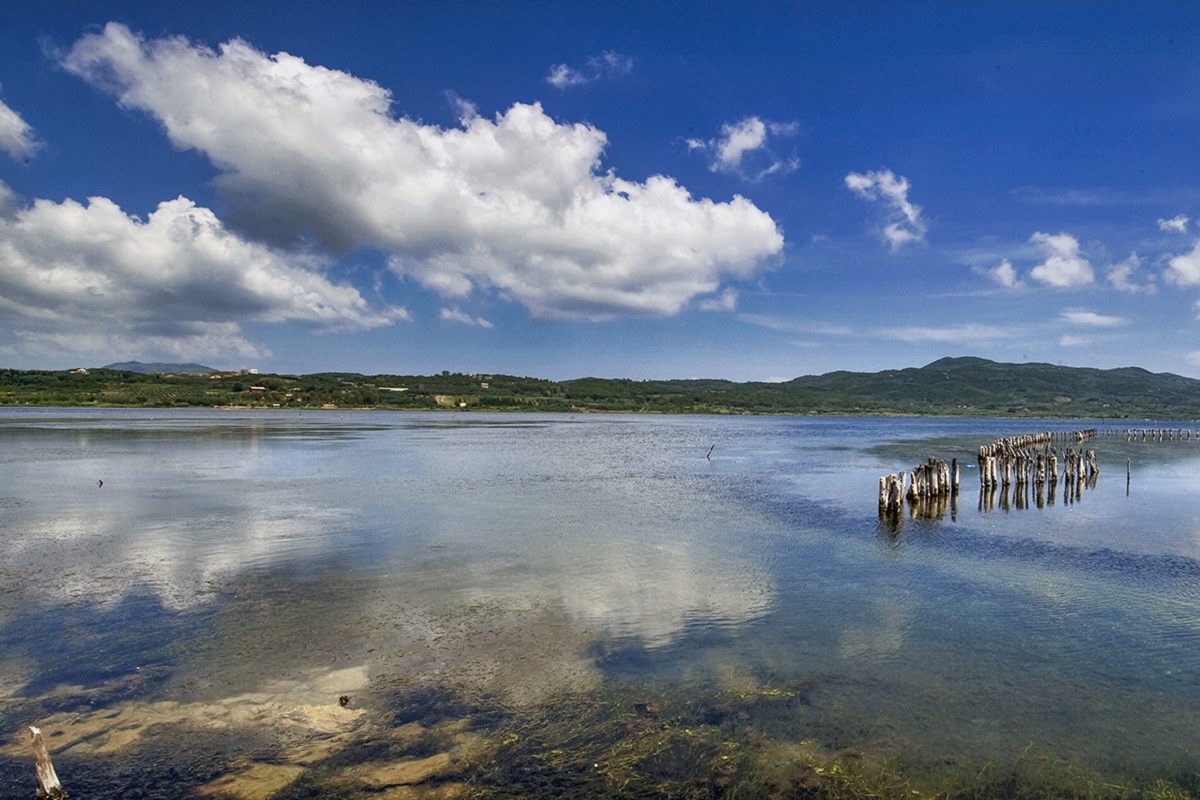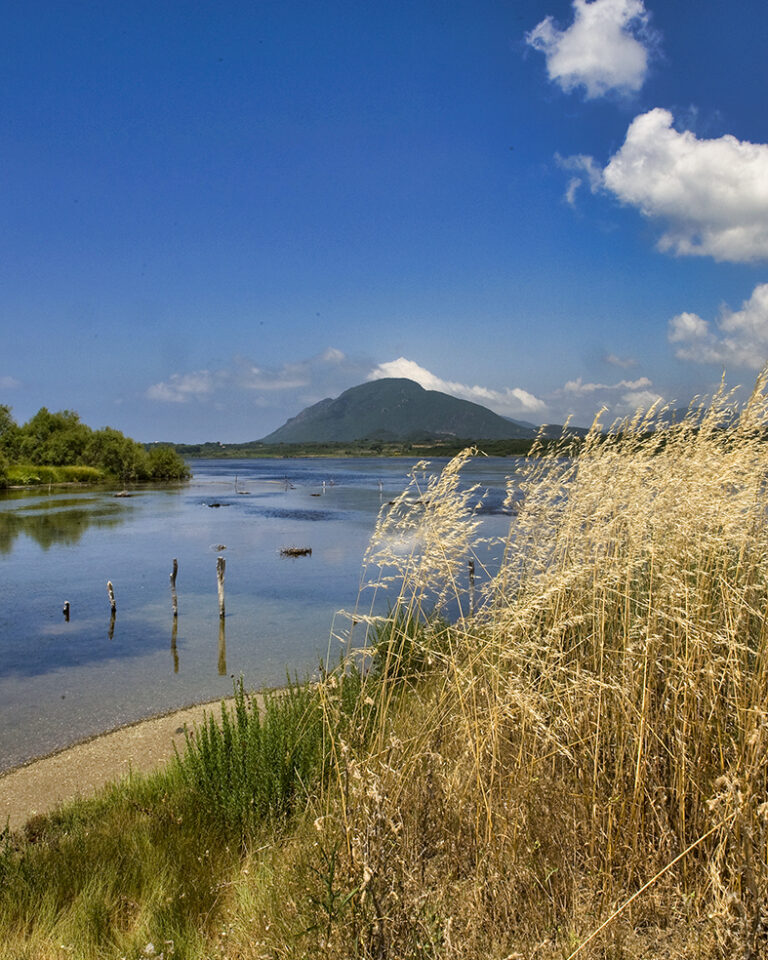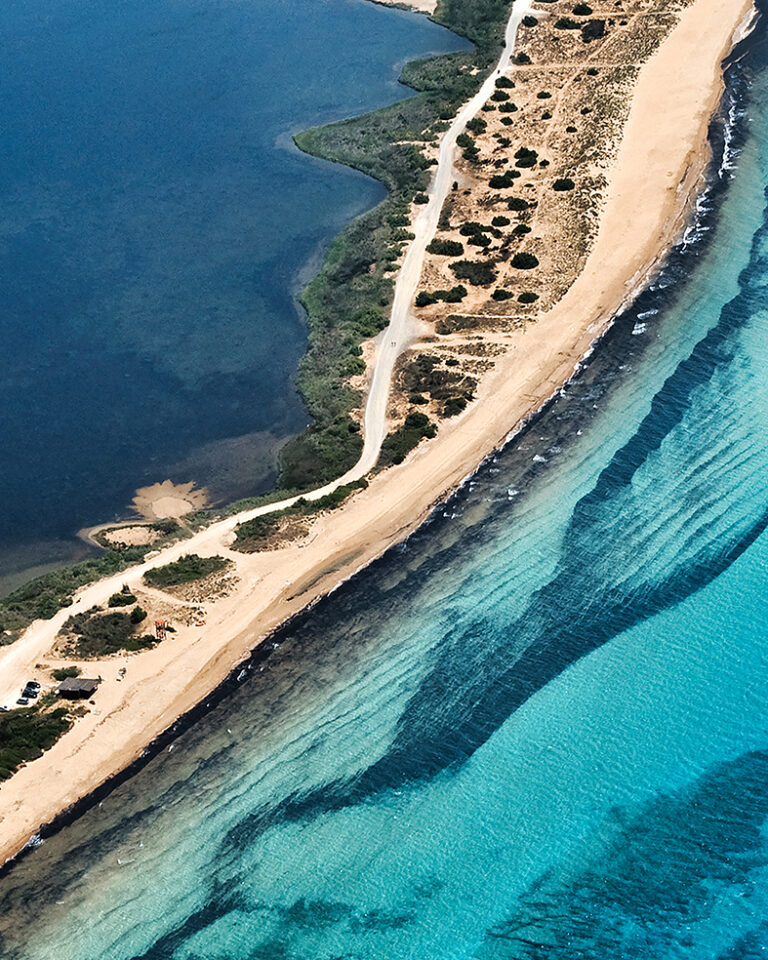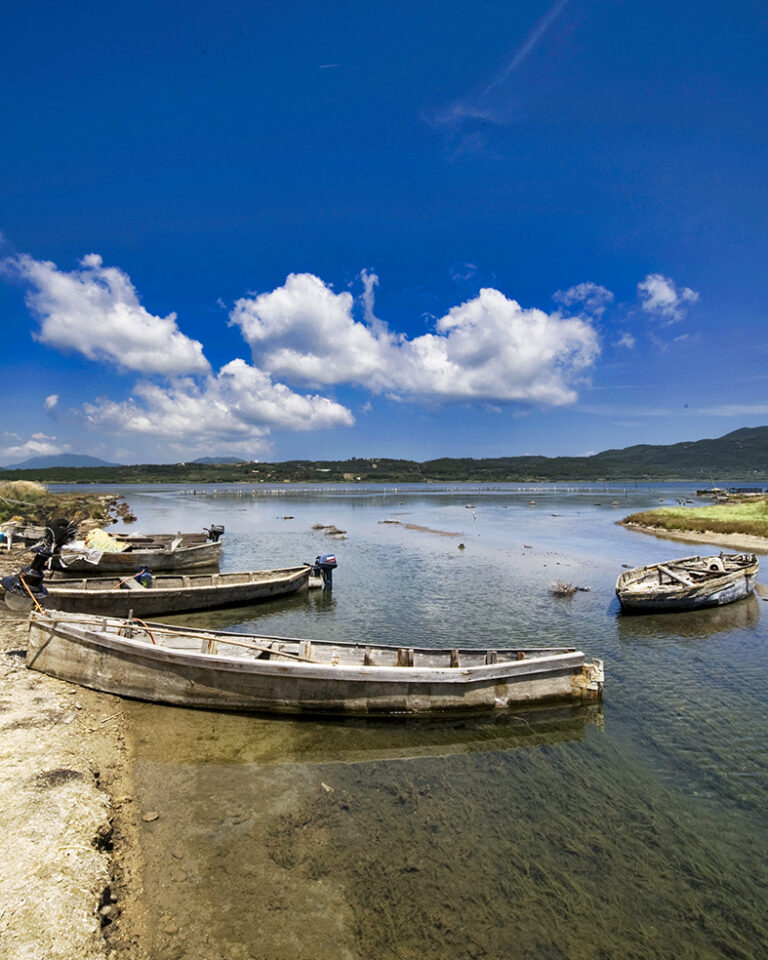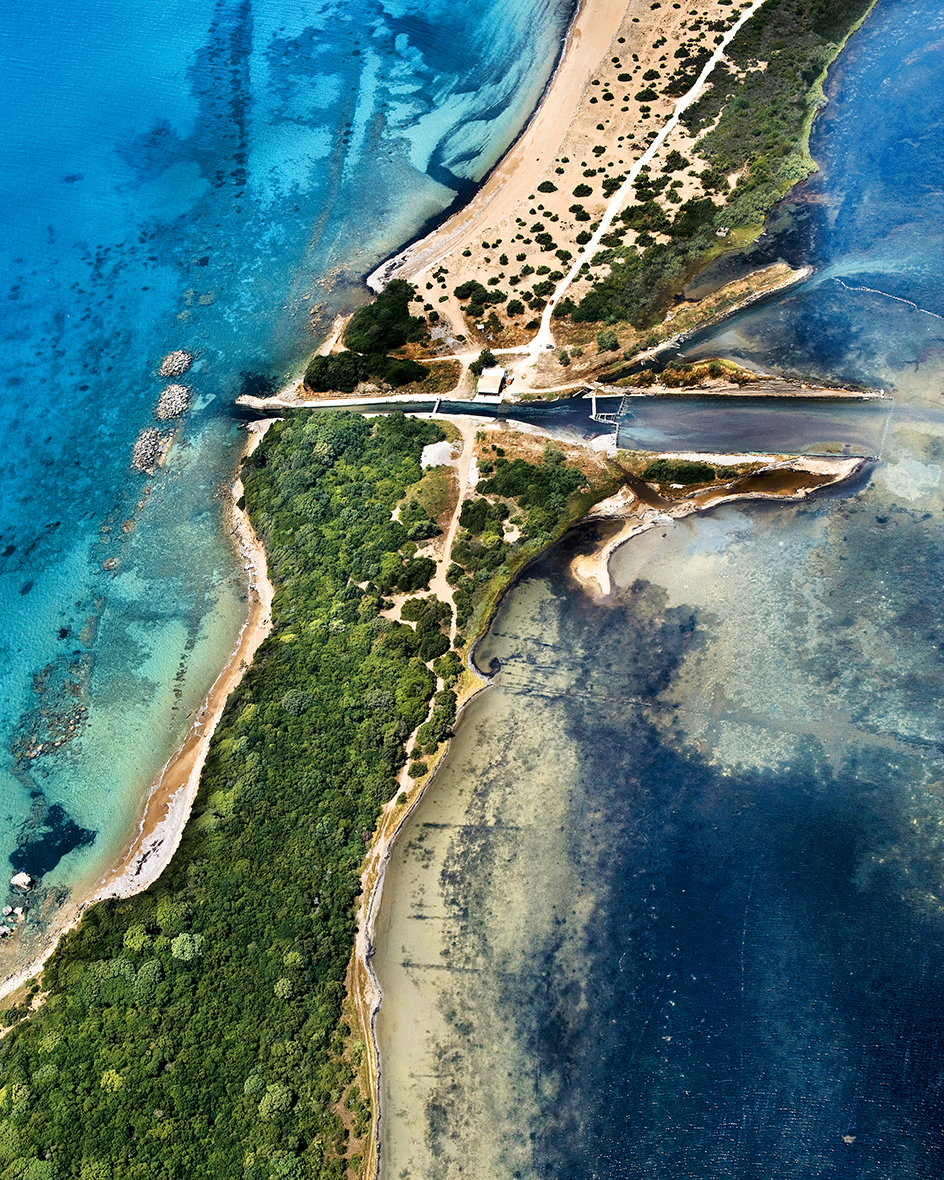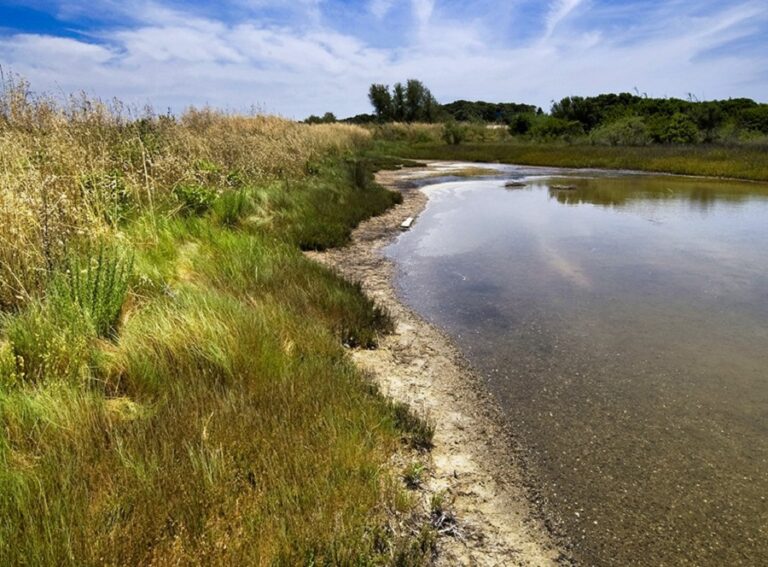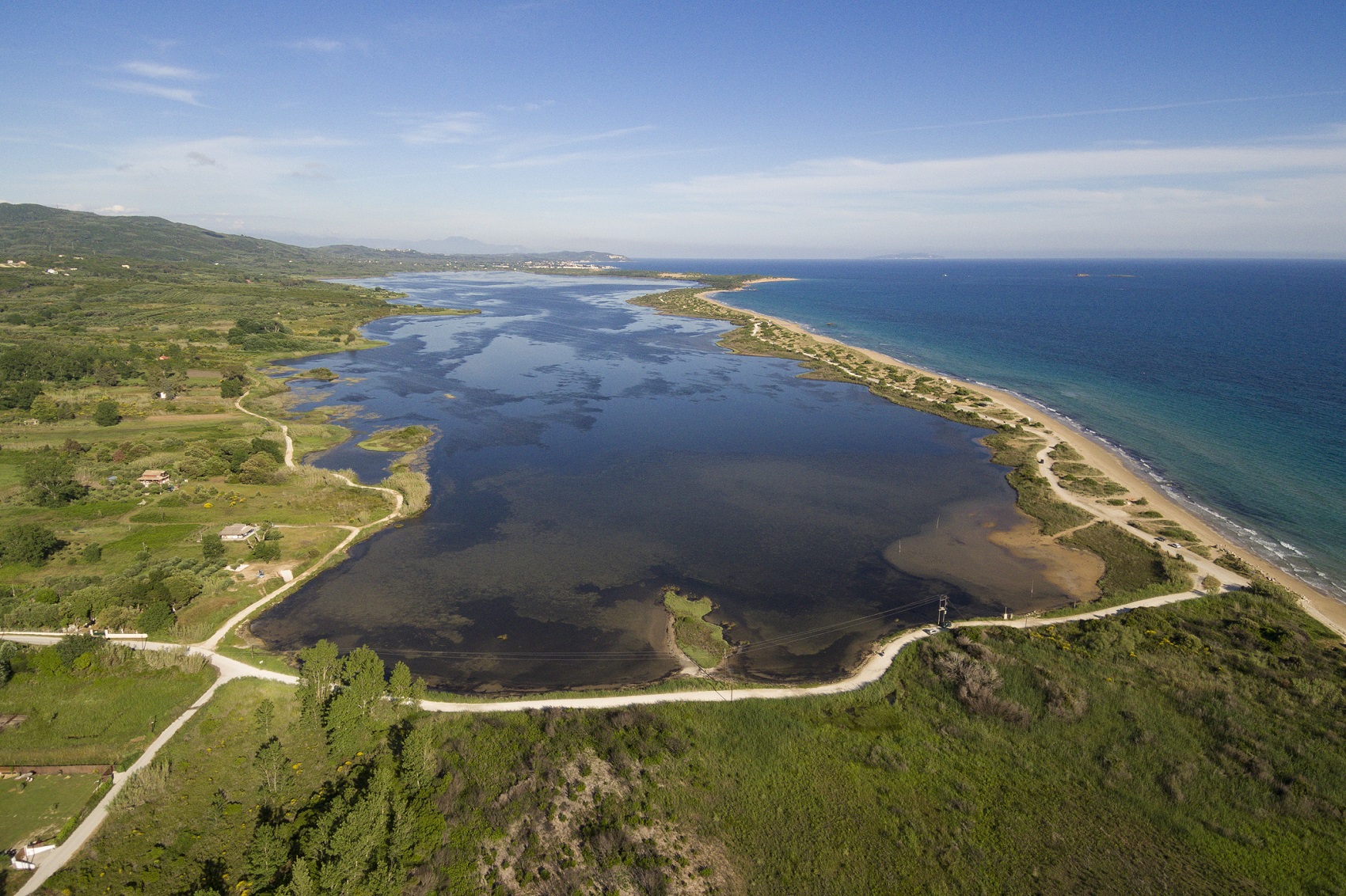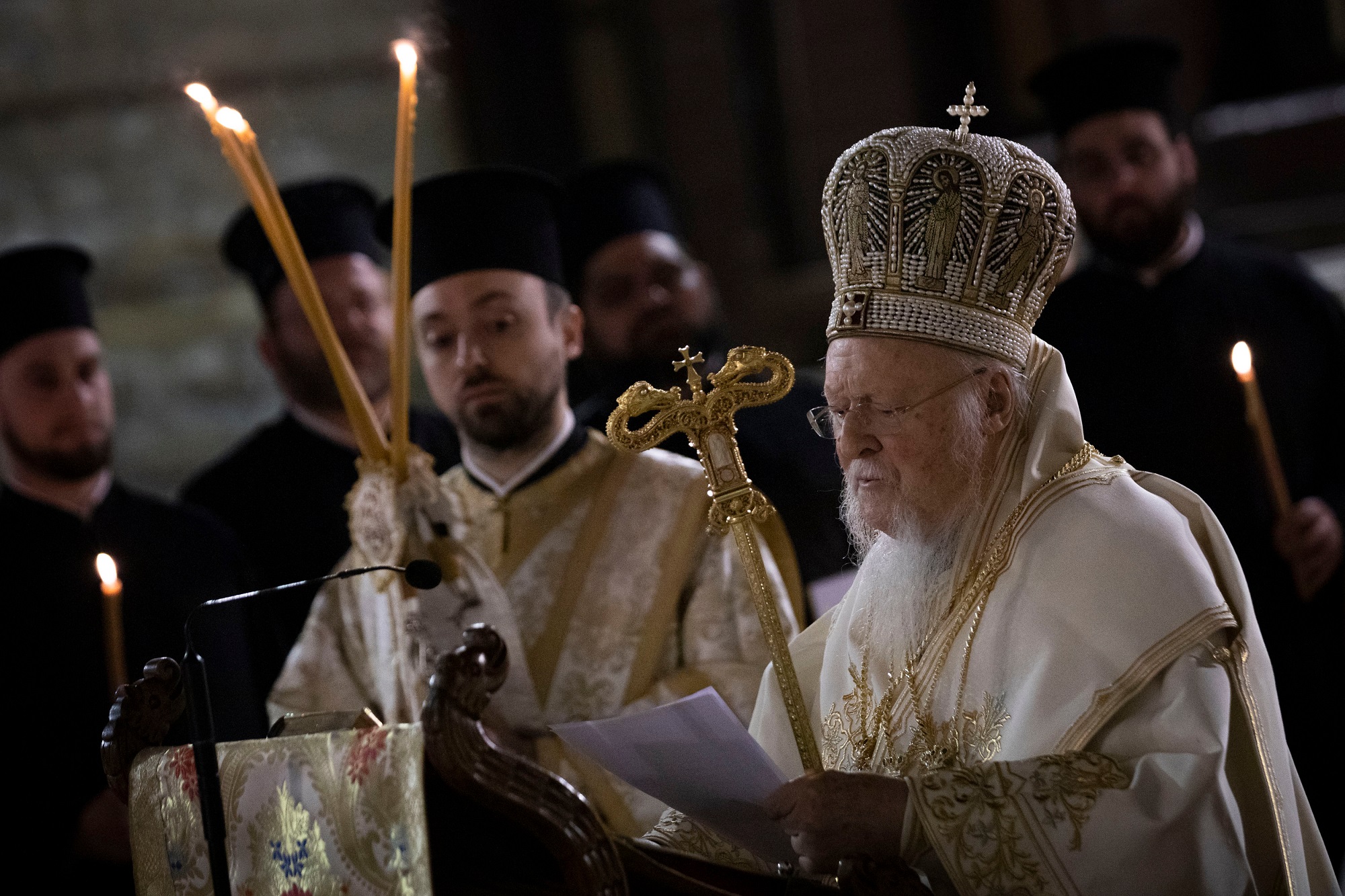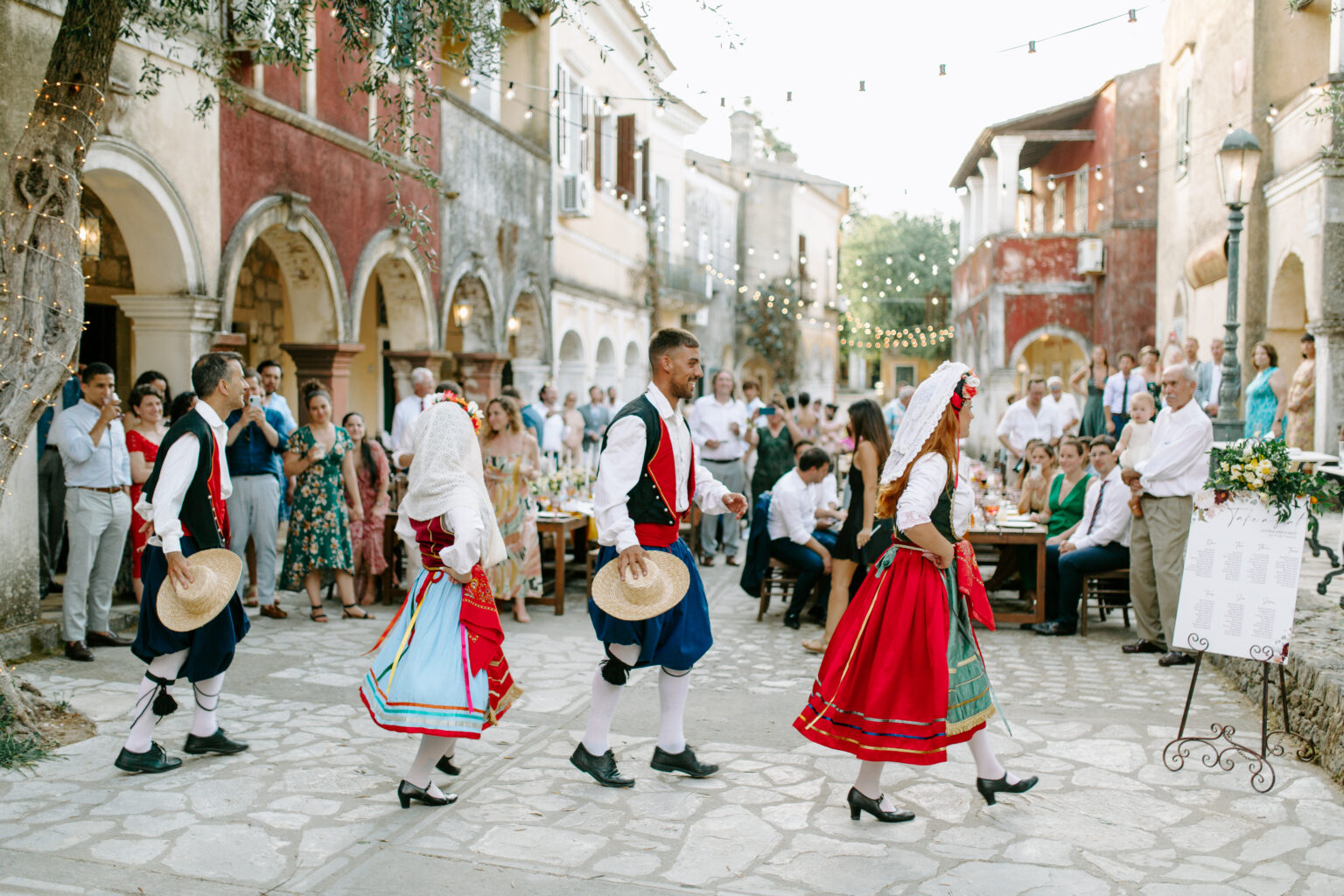It is often referred to as a “lake” – including in some travel features – since this was its natural formation, and is the impression it makes at first sight, but with human interference it has been turned into a lagoon: if you look closely, you’ll notice there’s a narrow, artificial canal (created in 1923) that links it to the sea.
Korissia, or as it’s formally known Korissia Lagoon, is located in the south-west edge of Corfu and comprises a significant ecosystem. It is a draw for many visitors, not only for the unique flora and fauna, but also because of the alluring features.
Korissia is a protected area that belongs to the European Natura 2000 network and has been officially declared an “Area of Outstanding Natural Beauty”, something that contributed to the further development of the neighbouring settlement of Halikouna, in a way that respects the idyllic natural environment.
Sand dunes, cedar forest and rare fish species
The Korissia lagoon stretches 4.2 km² with an estimated length of 2km, and has an average depth of 0.80m, as well as some points that are 1.7m deep.
The only thing between Korissia and the Ionian Sea is a narrow stretch of land (250m wide) where a manmade canal made of rocks and concrete has been opened to link it with the sea. The locals call this opening “Tagio” and it is located at the southernmost point of the Halikouna beach. The local fishermen are based there, and you’ll be able to see their korito, as they call the characteristic local fish boats. In addition, stone artefacts found in the area seem to imply that this was also the location of a prehistoric settlement, dating back to 950 – 750,000 years ago.
It is a salt water lagoon with calm, blue-green waters, typical of the Ionian Sea. In and around the lagoon, a wetland ecosystem of exquisite beauty and rare flora and fauna has formed. Its name comes from the ancient Greek word “korikos” which was a sack filled with sand, used by athletes in ancient Greece to train, and is reflected on the unique sand dunes surrounding the lagoon, some of which are 17m tall.
A small cedar (Juniperus macrocarpa) forest, adding a touch of green to the landscape, has grown on the sandy terrain. It’s very easy to cross through the forest on a trail by the lagoon but be extra careful as the area is home to vipers – in addition to the many mosquitoes that frequent the area between May and October. The rest of the area is covered in reeds, rushes, white lilies, and some tamarisk trees, as well as 14 different orchid species that grow on the sand when in season.
Furthermore, Korissia is home to various bird species (estimated to be around 120), including herons, flamingos, mallards, the common pratincole, as well as birds of prey like the common buzzard, or hen harriers. Additionally, various frogs, turtles, and water snakes live here, as do hedgehogs, hares and weasels.
The variety of species living in the lagoon’s waters is equally interesting, with Korissia being home to a very rare species, the Corfu dwarf goby (Knipowitschia goerneri), as well as other fish that are not commonly found in Greece, like the Valencia tooth carp (Valencia hispanica) or the Mediterranean killfish (Aphanius fasciatus), as well as crabs, eels, shrimp, European bass and soles that are what the fishermen mostly catch. Finally, the flathead grey mullet is abundant in the lagoon’s waters, and as a result there’s local production of a tasty but relatively unknown bottarga.
How to get to Korissia
Like we mentioned above, Korissia is located in the south-west edge of Corfu, near the village Argirades, right behind of the Halikouna beach – where the west bank of the lagoon is found – and next to the beach Issos – the lagoon’s south bank, in the wider Agios Mattheos area, in the Municipality of South Corfu.
Korissia is located near the airport (26km away) while it is around 30km southwest of town. Access is easy by private transport: follow the coastal road east, and turn west when you reach Mesoggi, and from there, you’ll reach Halikouna, crossing some small beautiful plains.
Read also:
6 special cafés in the old town of Corfu, Greece
Traditional desserts, aromatic coffee and delicate liquors in a historic coffee house in Corfu
Corfu: A visit to Koukouritsa, the enchanting country house of Ioannis Capodistrias



